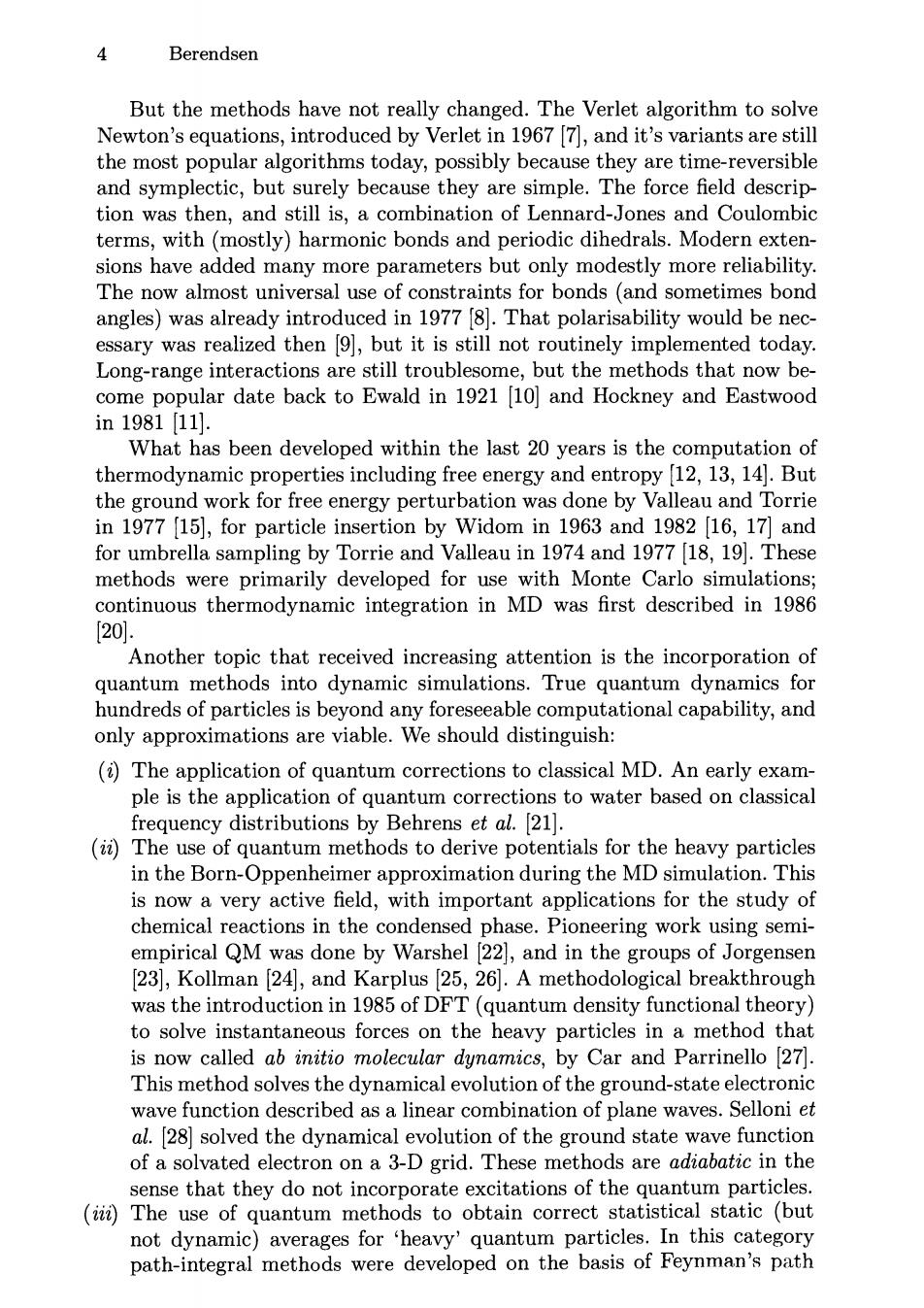正在加载图片...

4 Berendsen But the methods have not really changed.The Verlet algorithm to solve Newton's equations,introduced by Verlet in 1967 [7],and it's variants are still the most popular algorithms today,possibly because they are time-reversible and symplectic,but surely because they are simple.The force field descrip- tion was then,and still is,a combination of Lennard-Jones and Coulombic terms,with(mostly)harmonic bonds and periodic dihedrals.Modern exten- sions have added many more parameters but only modestly more reliability. The now almost universal use of constraints for bonds (and sometimes bond angles)was already introduced in 1977 [8].That polarisability would be nec- essary was realized then [9],but it is still not routinely implemented today. Long-range interactions are still troublesome,but the methods that now be- come popular date back to Ewald in 1921 10 and Hockney and Eastwood in198111. What has been developed within the last 20 years is the computation of thermodynamic properties including free energy and entropy [12,13,14].But the ground work for free energy perturbation was done by Valleau and Torrie in 1977 [15],for particle insertion by Widom in 1963 and 1982 [16,17]and for umbrella sampling by Torrie and Valleau in 1974 and 1977 [18,19.These methods were primarily developed for use with Monte Carlo simulations; continuous thermodynamic integration in MD was first described in 1986 [201. Another topic that received increasing attention is the incorporation of quantum methods into dynamic simulations.True quantum dynamics for hundreds of particles is beyond any foreseeable computational capability,and only approximations are viable.We should distinguish: ()The application of quantum corrections to classical MD.An early exam- ple is the application of quantum corrections to water based on classical frequency distributions by Behrens et al.[21]. (i)The use of quantum methods to derive potentials for the heavy particles in the Born-Oppenheimer approximation during the MD simulation.This is now a very active field,with important applications for the study of chemical reactions in the condensed phase.Pioneering work using semi- empirical QM was done by Warshel [22],and in the groups of Jorgensen [23],Kollman [24],and Karplus [25,26].A methodological breakthrough was the introduction in 1985 of DFT(quantum density functional theory) to solve instantaneous forces on the heavy particles in a method that is now called ab initio molecular dymamics,by Car and Parrinello [27. This method solves the dynamical evolution of the ground-state electronic wave function described as a linear combination of plane waves.Selloni et al.28 solved the dynamical evolution of the ground state wave function of a solvated electron on a 3-D grid.These methods are adiabatic in the sense that they do not incorporate excitations of the quantum particles. (i)The use of quantum methods to obtain correct statistical static (but not dynamic)averages for heavy'quantum particles.In this category path-integral methods were developed on the basis of Feynman's path